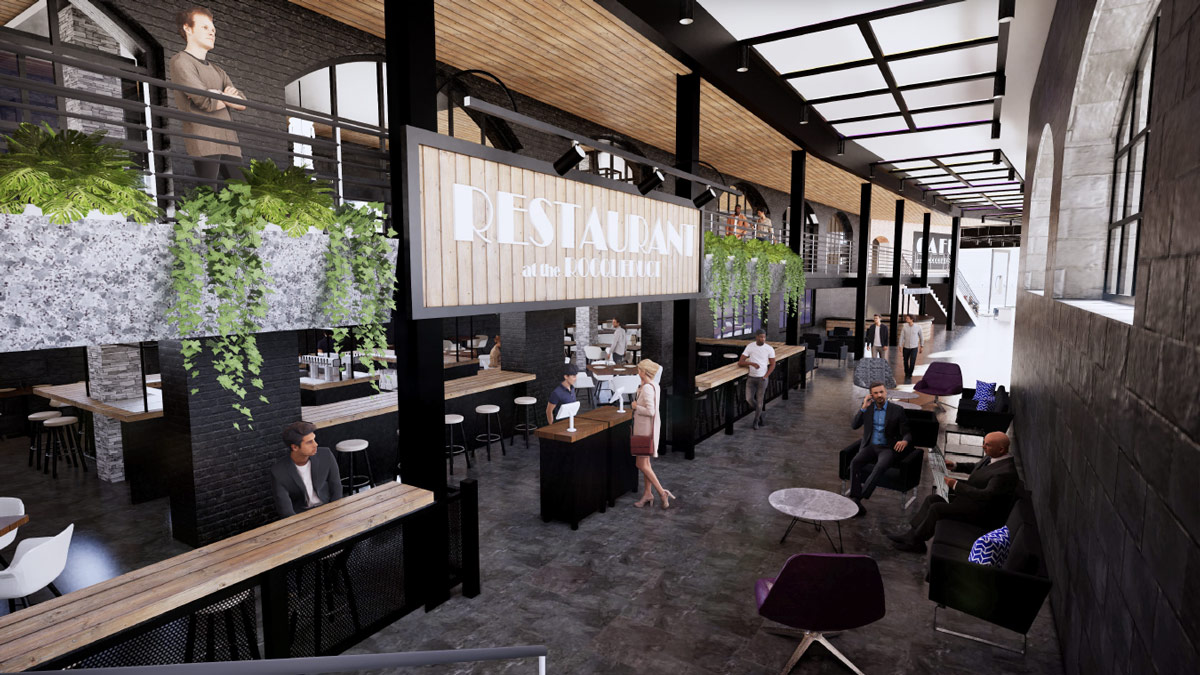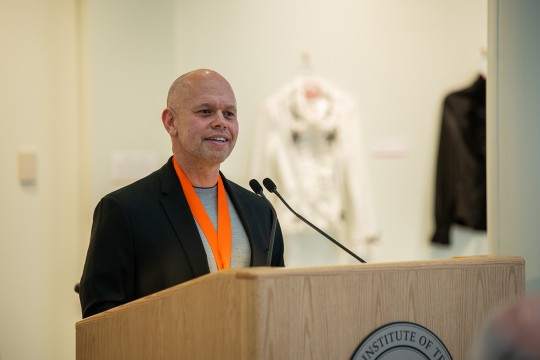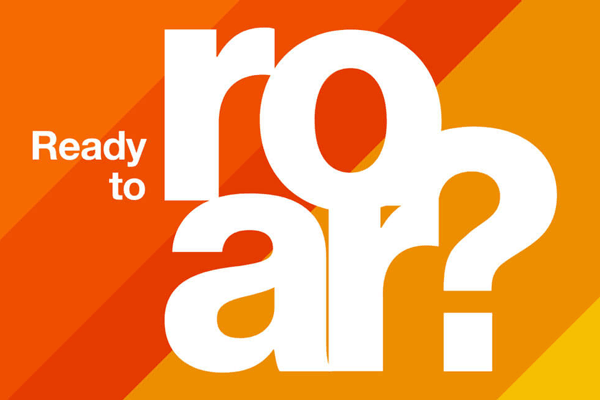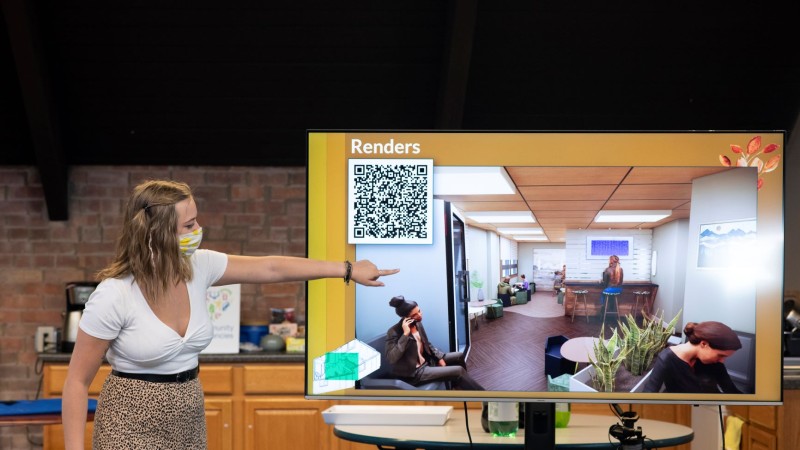Interior Design Bachelor of Fine Arts Degree

Interior Design
Bachelor of Fine Arts Degree
- RIT /
- Rochester Institute of Technology /
- Academics /
- Interior Design BFA
The interior design BFA establishes you as an expert in creating human-centered environments and understanding the relationship between people and their physical surroundings.
$47K
Median First-Year Salary of RIT Graduates from this degree
40
Renowned design pioneers have work held in the archives of RIT’s world-renowned Vignelli Center for Design Studies
Overview for Interior Design BFA
Why Study Interior Design at RIT
Accelerated Degree Option: RIT’s 4+2 BFA/M.Arch. enables you to complete your interior design degree and enter the second year of RIT’s master of architecture degree with advanced standing.
Gain Real-World Experience: Students design solutions to pressing issues, with projects often seeing the real-world application. Prominent projects include a Mobile Kitchen design, RIT Hope for Honduras, designing RIT City Art Space, a collaboration with the Rochester Public Library, and capstone research.
Industry Standard Resources: Studio spaces allow students to interact with peers and faculty, fostering collaboration. And our professional-level material resource center contains specialty products managed and updated regularly by manufacturer vendors.
Showcase Your Work: Students regularly showcase their creative and innovative projects to a global audience during NYCxDESIGN, with their involvement including the curation of exhibitions for the WantedDesign Manhattan event.
Sustainable Design and Social Consciousness: Two values embedded in the curriculum and guiding principles for the interior design BFA initiatives.
The interior design degree is a professional program accredited by the Council for Interior Design Accreditation (CIDA). The program offers broader access to allied programs, technology resources, and relationships within RIT that push traditional boundaries of interior design education.
RIT’s Interior Design BFA
The interior design degree will teach you how to create contextually appropriate, architecture-centric design solutions grounded in evidence-based design research and human behavior theory. You will be prepared to generate holistic, technically creative construction solutions that are not only resilient, adaptable, and sustainable, but purposeful and universally designed.
From your first year through senior year, you'll work on real-world projects that involve collaborative, multidisciplinary team activities and independent studies with our professionally certified and experienced faculty team.
In the interior design BFA you will:
- Explore, challenge, and enhance your interior design abilities through problem-solving
- Demonstrate knowledge of historical, stylistic, theoretical, regional, and cultural design vocabularies
- Use materials, techniques, and processes with a focus on sustainable design
- Conduct research and analyze information
- Introduce design theory, methodology, formal design elements, typology, and necessary technical skills to communicate concepts
- Examine business practices, regulations, standards, and codes of interior design
The interior design undergraduate degree also offers:
- Dedicated studio and lecture spaces
- An active material resource center offering “go-to” and specialty products
- RIT’s world-renowned Vignelli Center for Design Studies
- Access to memberships in a variety of professional organizations
Our comprehensive interior design major combines design history, building systems, space planning, and design process with a consciousness for global affairs so that students may contribute to the profession with a deep-rooted understanding of society, culture, and the environment. By maximizing an array of academic and professional opportunities, our graduates are reshaping how we live in the world
Invaluable Resources
Dedicated studio and lecture spaces provide you with the freedom to interact with peers and faculty, fostering teamwork and collaboration. Our active material resource center is akin to the professional office library with “go-to” and specialty products that are managed and updated regularly by manufacturer vendors. RIT’s world-renowned Vignelli Center for Design Studies also serves as a vital resource for understanding the process and product of design by some of the world’s most acclaimed designers.
Professional Memberships
The School of Design maintains memberships in a variety of professional organizations, including Industrial Designers Society of America, ACM Siggraph, Society of Environmental Graphic Designers, American Institute of Architects, ICOGRADA, American Institute of Graphic Arts, and International Interior Design Association.
Staying Connected
Our illustrious alumni are committed to mentoring students through internship and professional networking activities. Additionally, as an International Interior Design Association (IIDA) Campus Center, we facilitate regular interaction and events with industry professionals.
Furthering Your Education in Interior Design
Combined Accelerated Bachelor’s/Master’s Degrees
Today’s careers require advanced degrees grounded in real-world experience. RIT’s Combined Accelerated Bachelor’s/Master’s Degrees enable you to earn both a bachelor’s and master’s degree in as little as five years of study, all while gaining the valuable hands-on experience that comes from co-ops, internships, research, study abroad, and more.
- 4+2 BFA/M.Arch. Pathway: A BFA degree takes four years to complete and an M.Arch. degree typically takes an additional three to four years. In RIT’s 4+2 BFA/M.Arch. Pathway, you’ll complete a BFA in industrial design or interior design and then enter the second year of RIT’s NAAB-accredited master of architecture degree with advanced standing. Learn how this accelerated pathway enables you to earn a BFA and an M.Arch. degree in as little as six years, saving you time and money.
- +1 MBA: Students who enroll in a qualifying undergraduate degree have the opportunity to add an MBA to their bachelor’s degree after their first year of study, depending on their program. Learn how the +1 MBA can accelerate your learning and position you for success.
-
Join Us for Accepted Student Open House
Visit campus on March 28 or April 11 to meet faculty, tour campus, and ask your questions.
-
Apply for Fall 2026
First-year students can apply for Early Decision II by Jan. 1 to get an admissions and financial aid assessment by mid-January.
Careers and Experiential Learning
Typical Job Titles
| Commercial Designer | Customer Service Representative | Design Consultant |
| Educational Designer | Gallery Exhibitioner | Healthcare Designer |
| Hotel and Hospitality Designer | Interior Design Associate | Interior Designer |
| Interior Detailing Design Associate | Junior Interior Designer | Occupancy Planner |
| Office Designer | Project Manager | Render Specialist |
| Retail Designer | Set and Exhibit Designer | Showroom Design Consultant |
Industries
-
Architecture and Planning
-
Design
-
Interior Design
-
Retail Stores
Cooperative Education and Internships
What’s different about an RIT education? It’s the career experience you gain by completing cooperative education and internships with top companies in every single industry. You’ll earn more than a degree. You’ll gain real-world career experience that sets you apart. It’s exposure–early and often–to a variety of professional work environments, career paths, and industries.
Co-ops and internships take your knowledge and turn it into know-how. An art and design co-op provides hands-on experience that enables you to apply your artistic capabilities in dynamic professional settings while you make valuable connections between classwork and real-world applications.
Cooperative education, internships, and other experiential learning opportunities are encouraged for students in the BFA in interior design.
Creative Industry Days
Connect with Design Industry Leaders
RIT’s Office of Career Services and Cooperative Education hosts Creative Industry Days, which connects students majoring in art, design, film and animation, photography, and select computing majors with companies, organizations, creative agencies, design firms, and more. Creative Industry Days are a series of events that allow you to network with company representatives and interview directly for open co-op and full-time employment positions.
Featured Work and Profiles
-
Innovative Healthcare Design
Mary Golden A multidisciplinary contingent of faculty and students from Rochester Institute of Technology, along with a number of industry partners, are delivering life-saving, innovative healthcare design...
Read More about Innovative Healthcare Design -
NBA Event Designer
Gary Mack ’93 (Interior Design) is a leader in the creation of immersive experiences for major sporting events around the world. As the associate director of creative strategy and production for the...
Read More about NBA Event Designer -
Mobile Kitchen Design
A multidisciplinary team of RIT Interior Design and Industrial Design students designed the Mobile Kitchen, which can be easily transformed for users with different needs and abilities. They exhibited...
Read More about Mobile Kitchen Design -
Design Solutions for Local School
RIT's interior design program partnered with the local Webster Montessori School for its annual one-week experience where students work with a real-world client on developing design solutions. For the...
Read More about Design Solutions for Local School -
Applying Design Expertise: Student Innovates Healthcare Solutions
Sara Chambers spent a summer working at an interdisciplinary consultancy that develops assistive healthcare solutions by combining technology, art, and design.
Read More about Applying Design Expertise: Student Innovates Healthcare Solutions -
Students Design Airport Concessions Area
For the program's annual Hyperspace workshop, RIT interior design were challenged to imagine and design a pre-security food and beverage service space for the Syracuse Hancock International...
Read More about Students Design Airport Concessions Area
Curriculum for 2025-2026 for Interior Design BFA
Current Students: See Curriculum Requirements
Admissions and Financial Aid
First-Year Admission
First-year applicants are expected to demonstrate a strong academic background that includes:
- 4 years of English
- 3 years of social studies and/or history
- 3-4 years of mathematics
- 2-3 years of science
- Studio art experience and a portfolio of original artwork are required. View Portfolio Requirements for more information.
Transfer Admission
Transfer applicants should meet these minimum degree-specific requirements:
- Studio art or design experience and a portfolio of original artwork are required. View Portfolio Requirements for more information.
Financial Aid and Scholarships
100% of all incoming first-year and transfer students receive aid.
RIT’s personalized and comprehensive financial aid program includes scholarships, grants, loans, and campus employment programs. When all these are put to work, your actual cost may be much lower than the published estimated cost of attendance.
Learn more about financial aid and scholarships
Accreditation
Related News
-
September 24, 2025

New School of Film and Animation director, faculty roles for 2025-26
Ricky Figueora taking over as the new director of RIT's School of Film and Animation headlines exciting promotions and additions to the College of Art and Design faculty.
-
June 17, 2025

RPL rolls out new library on wheels
Rochester Beacon reports on RPL GO!, a new library vehicle in the Rochester Public Library system. The design was in part created by students in RIT's College of Art and Design.
-
May 8, 2025

Home renovation projects lay foundation for student's interior design/architecture path
Helping her father with small renovation projects eventually led Autumn Howard to connecting her skills in that area with interior design and architecture aspirations, which she is fulfilling at RIT through the 4+2 BFA/M.Arch pathway.
Contact
- Mary Golden
- Associate Professor, Art - Design and Applied Arts
- School of Design
- College of Art and Design
- 585‑475‑7893
- megfaa@rit.edu
School of Design






















